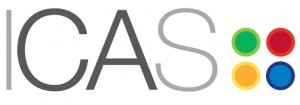ICAS members and their clients gathered in Inverness last month to hear about employee ownership as an exit solution.
Here, ICAS member Peter Mitchell reflects on the day and looks at how the ownership model can benefit businesses in the Highlands.
As advisers we are careful not to direct our client towards any particular ownership model. It’s our job to provide them with sufficient, comprehensive information to enable them to make an informed choice.
One of my clients is employee-owned and I’m convinced of the benefits. It’s a model with particular relevance to the Highlands – independent, owner-managed and family businesses are a significant part of our economy.
Exit to a trade buyer from elsewhere places a threat on the future of the business in the local area. We need to sustain opportunities for our young people and retain quality jobs in the community.
 Carole Leslie, a Co-operative Development Scotland (CDS) specialist adviser, reinforced the economic benefits of employee ownership in her presentation. Most of those present did not know how widespread employee ownership is; I didn’t know that the architects of the Eden Court Theatre were 100 per cent employee owned, or that the project managers of the Skye Bridge, Arup, have been employee-owned since 1974.
Carole Leslie, a Co-operative Development Scotland (CDS) specialist adviser, reinforced the economic benefits of employee ownership in her presentation. Most of those present did not know how widespread employee ownership is; I didn’t know that the architects of the Eden Court Theatre were 100 per cent employee owned, or that the project managers of the Skye Bridge, Arup, have been employee-owned since 1974.
Chris Kerr, from Harper Macleod, is a leading authority on employee ownership and he talked the audience through the technical aspects of the model and the transition process. He stressed the importance of involving employees in the transaction as this helps shape a better outcome and wins greater engagement going forward.
The highlight of the session was the story of Aquascot, delivered so eloquently by ICAS member Robert Murray, a company founder and its finance director. Aquascot employs 150 people in Alness and has a turnover of £40m. The founders could have sold the business – and had some lucrative offers – but their commitment to Easter Ross and to an ethical way of doing business convinced them to look at other options.
Their main customer is Waitrose, and their employee ownership model fit what the founders were looking for. With some guidance from Waitrose, John Lewis Partnership and John Housego of employee owned WL Gore, the sustainable seafood company is looking to become fully employee-owned by 2016.
Chris Kerr summed it up well: “Employee ownership won’t fit with every business, but where it does, the results can be remarkable.” It was encouraging to see so much interest in the model. CDS is doing a great job in raising awareness and I expect that a few more advisers and their clients will start to come forward.